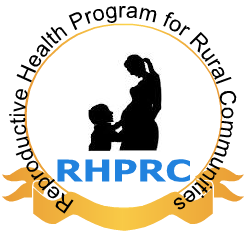TREATMENT OF
INFERTILITY.
The treatment of
infertility should be tailored to the problems unique to each couple. Even so,
a woman above 30 years is treated hastily because the biological clock is
closer to menopause and also because epidemiological studies have proven the
increasing health risks associated with increased age of mother at birth of the baby.
Ovulatory Dysfunction
Treatment of ovulatory
dysfunction should first be directed at identification of the etiology of the
disorder to allow specific management when possible. Dopamine agonists, for
example, may be indicated in patients with hyperprolactinemia while life-style
modification may be successful in women with low body weight or a history of
intensive exercise.
Medications used for
ovulation induction include clomiphene citrate, gonadotropins, and pulsatile
GnRH.
1. Clomiphene citrate is a
nonsteroidal estrogen antagonist that increases FSH and LH levels by blocking
estrogen negative feedback at the hypothalamus. The efficacy of clomiphene for
ovulation induction is highly dependent on patient selection. It induces
ovulation in 70 to 80% of women with PCOS and is the initial treatment of
choice in these patients.
2.
Gonadotropins
are highly effective for ovulation induction in women with hypogonadotropic
hypogonadism and PCOS and are used to induce multiple follicular recruitment in
unexplained infertility and in older reproductive-aged women. Disadvantages
include a significant risk of multiple gestation and the risk of ovarian
hyperstimulation, but careful monitoring and a conservative approach to ovarian
stimulation reduce these risks.
3. Pulsatile GnRH is
highly effective for restoring ovulation in patients with hypothalamic
amenorrhea .Pregnancy rates are similar to those following the use of
gonadotropins, but rates of multiple gestation are lower and there is virtually
no risk of ovarian hyperstimulation.
None of these methods
are effective in women with premature ovarian failure in whom donor oocyte or
adoption are the methods of choice.
Tubal Disease
If
hysterosalpingography suggests a tubal or uterine cavity abnormality, or if a
patient is ≥35 at the time of initial evaluation, laparoscopy with tubal lavage
is recommended, often with a hysteroscopy. Although tubal reconstruction may be
attempted if tubal disease is identified, IVF is often used instead, as these
patients are at increased risk of developing an ectopic pregnancy.
Endometriosis
laparoscopic resection
or ablation appears to improve conception rates even though most women with
mild cases of endometriosis are capable of giving birth to babies within a
year.
Medical management of advanced stages of
endometriosis is widely used for symptom control but has not been shown to
enhance fertility.
In moderate to severe
endometriosis, conservative surgery is associated with pregnancy although some
patients prefer IVF as the treatment of choice.
Though often effective, IVF is expensive and
requires careful monitoring of ovulation induction and invasive techniques,
including the aspiration of multiple follicles. IVF is associated with a
significant risk of multiple gestation (31% twins, 6% triplets, and 0.2% higher
order multiples).
Assisted Reproductive
Technologies
The development of
assisted reproductive technologies (ART) has dramatically altered the treatment
of male and female infertility. IVF is indicated for patients with many causes
of infertility that have not been successfully managed with more conservative
approaches. IVF or ICSI is often the treatment of choice in couples with a
significant male factor or tubal disease, whereas IVF using donor oocytes is
used in patients with premature ovarian failure and in women of advanced
reproductive age. Success rates depend on the age of the woman and the cause of
the infertility.

.jpg)

.jpg)



